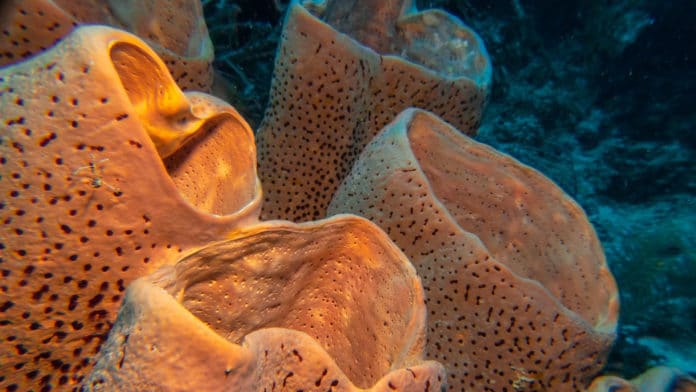Sponges, among the oldest extant creatures on Earth, play a vital role in the cycling of nutrients in many aquatic ecosystems. They need to employ strategies to prevent the clogging of their internal filter system by solid wastes. However, their self-cleaning mechanisms are largely unknown.
A new study by Niklas Kornder of the University of Amsterdam (UvA) and colleagues has presented time-lapse video footage and analyses of sponge waste, revealing a completely different particle removal mechanism. They found that sponges’ sneeze’ to clear their water channels. With a sneeze, the sponge releases a type of mucus eaten by other animals.
Sponges play a significant role in many aquatic habitats. They obtain their food by filtering up to thousands of liters of seawater daily by pumping water through a network of inflow and outflow channels in their bodies. By perfecting this method, sponges can obtain dissolved organic materials, a food supply that is inaccessible to the majority of other marine life.
When analyzing the video footage, the team was very surprised. After feeding on the dissolved organic matter, they found that the sponge produces a mucus-like waste carrier.
Kornder said, “It was expected that the waste is released with the outflowing water through their outflow pores.”
Purple tube sponge samples were taken by the scientists and put in an aquarium to gather mucus to test this notion. Additionally, a camera was set up to capture a time-lapse of the sponge surface.
Kornder said, “When analyzing, scientists found that every three to eight hours, sponges contracted and then relaxed their surface tissues. At first, we thought our focus was temporarily off but quickly realized the animals were ‘sneezing.’ The footage showed that the collected mucus is released with each sneeze, and the sponge is left with a clean surface.”
“Sponge sneezing has been described before and was generally thought of as a way for the sponge to regulate water flow. The time-lapses also showed that the mucus was continuously streamed out of the inflow openings, not the outflow openings, and slowly transported along distinct paths towards central collection points on the surfaces of the sponges.”
After the video, scientists noticed many small critters feeding off the energy-rich mucus on the sponges.
Kornder said, “A sponge sneeze is not the same as a human sneeze because such a sneeze lasts around half an hour. But they are indeed comparable because, for both sponges and humans, sneezing is a mechanism to get rid of waste.”
Scientists now want to continue examining sponge sneezing. They plan to investigate the underlying mechanism by combining electron microscopy with histological studies.
Journal Reference:
- Niklas A. Kornder, Yuki Esser, et al. Sponges, sneeze mucus to shed particulate waste from their seawater inlet pores. Current Biology. August 2022. DOI: 10.1016/j.cub.2022.07.017
